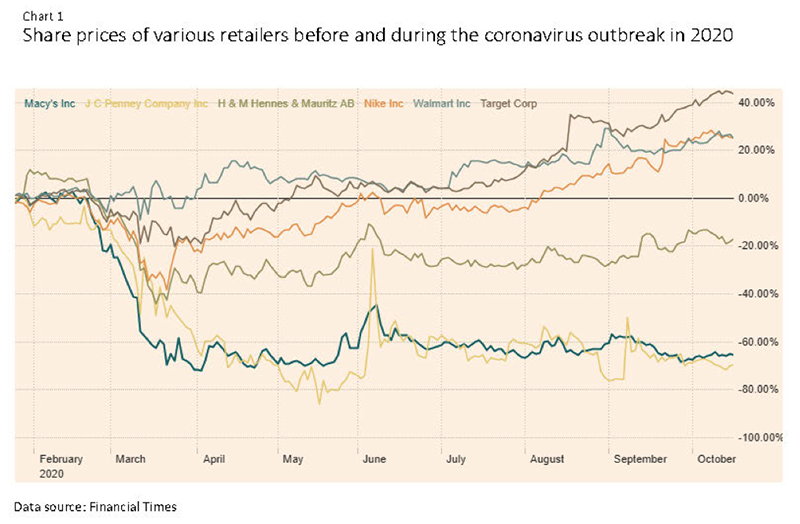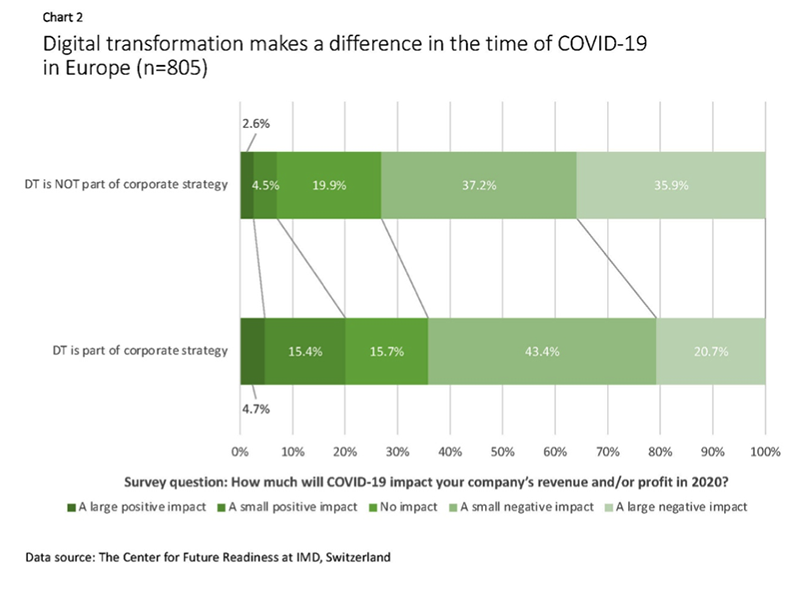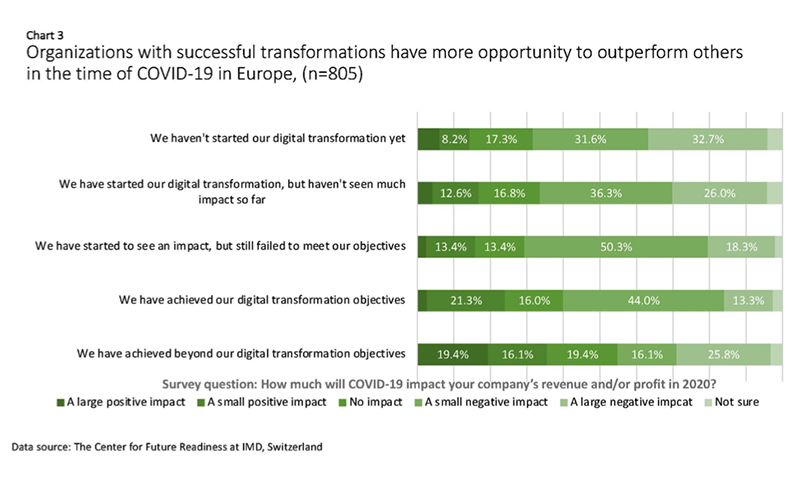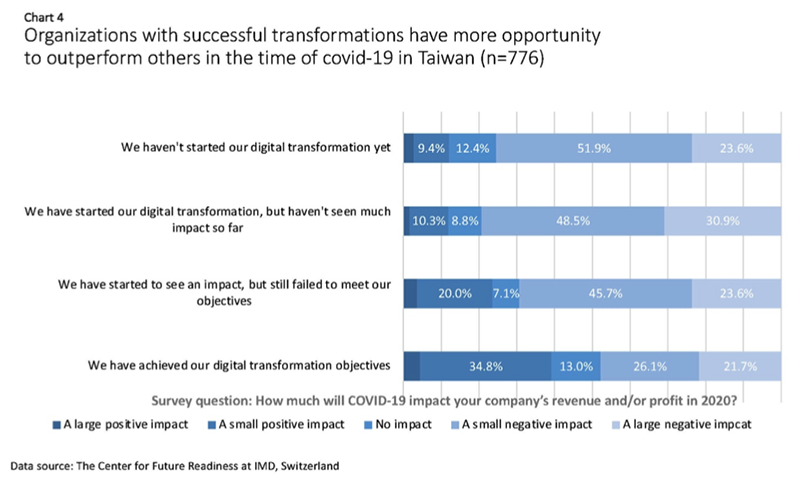By Howard Yu and Shan Jialu
The coronavirus crisis has shown us that ‘future-ready’ companies bounce back first
Warren Buffet wrote in his 2001 letter to shareholders that “you only find out who is swimming naked when the tide goes out.” It referred to the economic consequences of the 9/11 terrorist attack, which exposed the weak players in the financial sector, but the wisdom is ageless.
Today, the coronavirus pandemic is separating the winners and losers within each industry. Despite facing similar challenges, some companies have bounced back quicker — or even thrived — while others have collapsed. What is the source of resilience within a company?
The willingness to embrace change explains the divergence in fortunes in the corporate world. And the enabler of this dexterity is often investment in digital capabilities. COVID-19 has exposed the companies that have ignored and underestimated the speed of digitization, and they may now realize the enormous cost of their apathy.
At the Center for Future Readiness at the Institute for Management Development (IMD), we have been tracking companies’ readiness for change. Together with CommonWealth magazine in Taiwan, we surveyed more than 3,000 executives from Switzerland, Sweden and Taiwan about their progress in digital transformation.
With this data, we are able to unpack why some companies are more resilient than others. Let’s take an extreme example: retail. Traditional retailers are crumbling as sales plunge. JCPenney, with more than 800 stores and nearly 85,000 employees, filed for bankruptcy in May. It joined Neiman Marcus and J.Crew in the running list of retail casualties this year.
And yet, some retailers are thriving. Target, for one, reported a first-quarter increase of 141 percent in digital comparable sales. Walmart also appears to be well positioned. It saw a comparable sales increase of 10 percent, including a 74 percent jump in online sales. Its contactless, curbside pickup service is expanding rapidly. Customers order items online, drive to the store and wait while a worker loads everything into their trunk.
The resilience of these companies is due to one simple fact: They have transformed their traditional business models rapidly, sometimes literally overnight. They were able to do so because they have long invested in their digital capabilities.

A Global Comparison of Corporate Readiness
This conclusion is not limited to the U.S. retail industry. In our survey of Switzerland, Sweden and Taiwan, we saw the exact same pattern. We first asked companies if digital transformation is explicitly written within in their corporate strategy, which suggests they are serious about building up new capabilities, differing across sectors. For retail, digital transformation could require data analytics and e-commerce, for example. For banking, it could be artificial intelligence or mobile services.

The survey found that companies that have included digital transformation as part of their official strategy suffer less. During the coronavirus crisis, companies that didn’t include it have suffered more.
To compare progress, we asked the executives to describe the results of their digital initiatives so far, by choosing one of five statements, such as “I have seen no changes,” or “our digital transformation results have exceeded our initial goal.”
We found that again, the more a company has leaned into a digital transformation, the less negative impact it has faced during the coronavirus crisis.
 You can see the exact same pattern for the question posed in Taiwan.
You can see the exact same pattern for the question posed in Taiwan.

So, resilience is about your readiness for the future. Some companies have been aggressive in their investment in digital capabilities during the good times. They allocate resources effectively. They set goals. Then, they deliver.
Digital transformation enables crisis management. For instance, if you have invested in a digital supply chain, it’s easier to change suppliers because you know what’s missing when you have all the information at your fingertips. If not, you will be calling local managers on the phone and asking them to fill out Excel spreadsheets by hand.
Similarly, if you have invested in digital sales and marketing, it’s easier for you to change target markets, as you can quickly estimate how much demand has dropped, and spend more time strategizing the right move. As I argued here, if you’re doing stuff manually, no matter how hard-working you are, it’s just harder to cope.
This, in part, explains the divergence in company fortunes during the coronavirus pandemic. By the time the crisis abates, those who escaped relatively unscathed will already be moving on to the next investment. Chance favors the prepared.
About the Authors

Howard Yu is the author of LEAP: How to Thrive in a World Where Everything Can Be Copied (PublicAffairs; June 2018) and LEGO professor of management and innovation at the Institute for Management Development (IMD) in Switzerland.

Shan Jialu is a research associate at IMD’s global centre for digital business transformation.
About the survey:
- This survey was conducted by the Switzerland-based Institute for Management Development, in collaboration with CommonWealth (Taiwan).
- In Sweden and Switzerland, the online survey was in the field from May 19 to June 18, 2020, and garnered responses from 805 executives (60% of them are directors or above) representing the full range of industries, company sizes and functional specialties. Of them, 560 have been directly involved in digital transformation in their organizations.
- In Taiwan, the survey was mailed to 2000+ companies representing the full range of industries and company sizes, from May 25 to June 20, and finally returned 776 responses. The response rate was 38.72%.



































